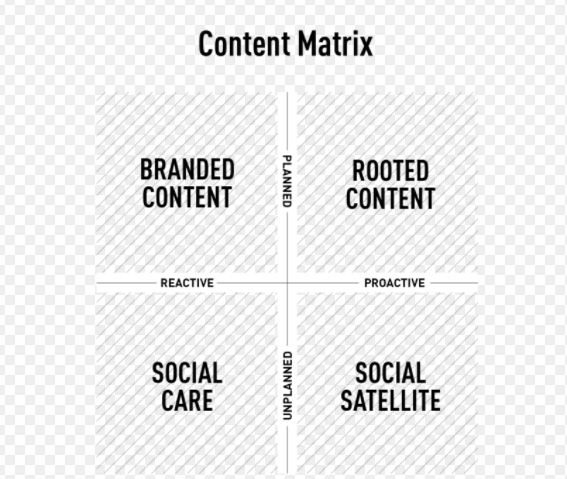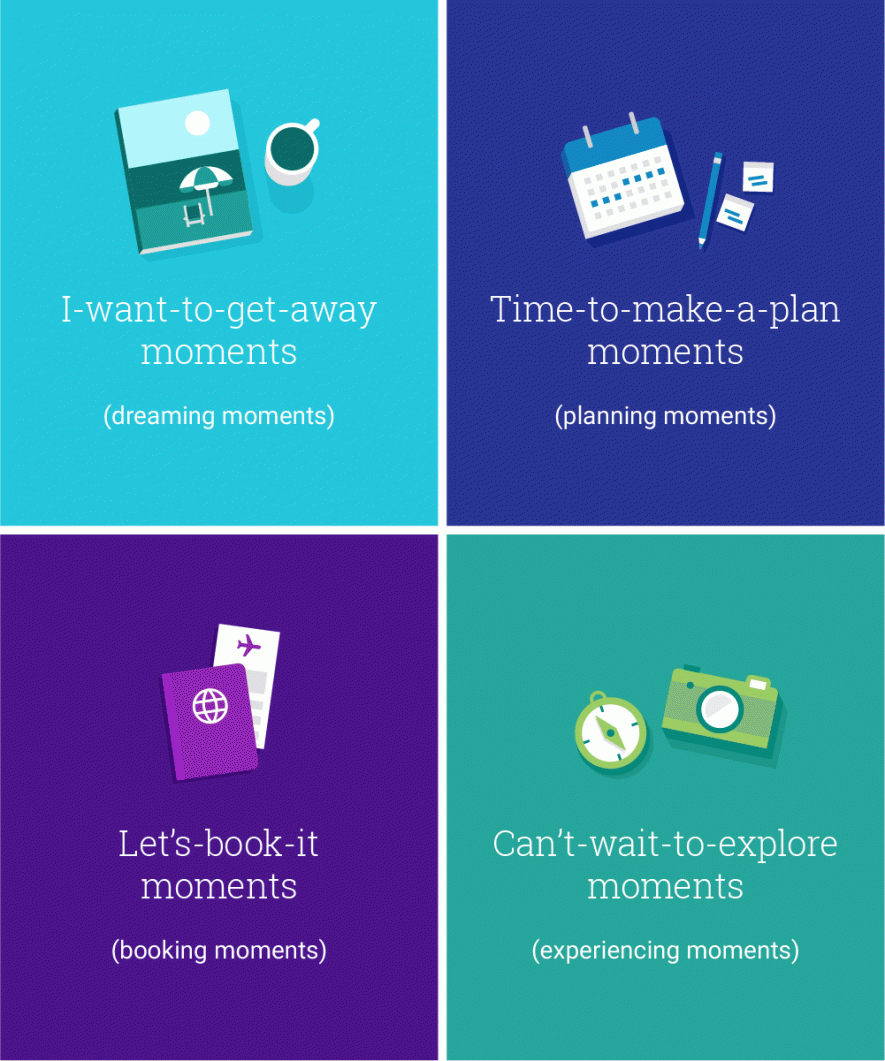Guy Sheetrit Content Marketing For Millennials – Stop Interrupting and Start Entertaining! … Wow-Score collecting now The Wow-Score shows how engaging a blog post is. It is calculated based on the correlation between users’ active reading time, their scrolling speed and the article’s length. Learn more Content Marketing For Millennials – Stop Interrupting and Start Entertaining!
- 4
- 2
Millennials are people who are born between 1977 and 2000. They are a set of audience who are early adopters of technology. They make up 21% of the US population which means that they have the direct buying power of over a trillion dollars. Moreover, they have a huge influence on the older generations and are known to be loyal customers.
As a marketer, it is extremely crucial to target millennials in order to tap into the power of direct purchase decisions and improve sales. As Skyler Huff points out in her article published on Millennial marketing, content falls under one of the below four quadrants:
- Branded Content
- Rooted Content
- Social Care Content
- Social Satellite Content

(Image credit millennialmarketing)
Rooted content is what the brands actually want to convey to their audiences. This content is planned and promotional in nature. Editorial authority is important before you start publishing such content, as aggressive rooted content publishing might keep the millennials away.
Social care content is based on the one-on-one interaction that the brands have with their target audiences. Content pieces that are a part of a social customer care process or a problem-solving piece shared to build brand loyalty fall under this category. Once again, editorial authority is needed before any message is posted on behalf of your business in the social channels. Remember, a wrong message can be extremely harmful for the reputation as negativity travels much faster across social channels as compared to positivity.
Branded content also falls into the planned category as writers are fully prepared before they publish content on the brand media channels. An editorial review should be a part of this process and value should be given when creating content which solves a need of the target audience on a large scale.
Social satellite content often known as the brand newsroom refers to the group of content writers who constantly keep a watch across brand mentions on social media and prepare content based on the received reactions. The goal here is to proactively manage brand promotion.
Do Not Interrupt! Help Them, Engage Them and Entertain Them
Traditional advertising mediums like television, radio, newspapers, hoardings, etc. are a form of push advertising. Such forms of push advertising often cause irritation in the minds of the millennials and do not inspire true brand love.
Use content as an opportunity to reach the consumers when they need you. Google offers some great insights reaching the customers during the crucial micro moments.

(Image displaying some of the crucial travel moments that businesses need to get right. Image credit: think with Google)
- Understand the needs of the millennials. Obtain a data driven view and note the patterns of the individual journeys. Smart marketing strategy recognizes the uniqueness of each customer and engages them to take actions.
- Create user personas based on their needs, goals and observed behavior patterns. Having personas will allow you to segment contacts and assign them to workflows. You can use tools like HubSpot to create user personas.
- Create new opportunities for your brand to get in front of the customers. However, do not force feed a brand message. Only deliver when they need it.
- Millennials like content that is entertaining, Visual, Brief, Personal, Original and Educational/Informative. Brands have even started to leverage the power of augmented reality to engage the audiences.
- Making a connection with the Millennials is the most crucial factor because once a connection is made, then they can prove to be the most loyal customers on the planet today.
Create Agility in Your Content Marketing Efforts
If you expect your brand to receive a positive response from your content marketing efforts, then it is important to create agile content. Think about creating content pieces based on genuine user feedback and real customer data instead of choosing a content topic randomly. This is what Agile content is all about. Agile content pieces are revised regularly depending on user feedback thereby increasing its value and lifetime and reducing the risk of failure. An example would be to create blog posts based on the questions that your customers are regularly asking.
- Agile content helps to leverage the power of real time news and events that have the power to engage people in conversations.
- The content strategy adopted should be actionable, scalable and achievable.
- Consumer, product and social data are combined to understand the audience behavior to produce agile content.
- The major goal should be creating content pieces that the Millennials would be willing to share across their social networks.
Here Are 4 Ways You Can Create Agile Content:
Step 1: Read well! A good writer should be a good reader first. Keep an eye on the latest industry trends and focus on fresh and fast moving news. You can try creating a content feed using Feedly or Scoop.it that collects news and information from several places together. This saves time as it eliminates the need to visit several sites on a daily basis to compile information. You need to visit your feed as often as possible because you never know when a new story will hit and go viral.
Step 2: Ask questions and gather data. Make use of the site search feature under Google Analytics and look out for the FAQ's left by the users in the chatbot database to collect as much data as possible. Moreover, create survey forms and find out what problems your customers are facing so that you can create content based on the real problems faced by the users, instead of choosing random topics that might have worked well for any other business. Remember every business is unique, and you need to create content that satisfies the needs of your current and potential customers.
Step 3: Build a content calendar. No mission is successful without proper planning. Content marketing is an ongoing activity that needs full planning that starts with topic preparation. Creating a content calendar always helps because it allows your organization to produce constant and frequent content.
Step 4: Repurpose your content. Take help of all those creative brains who are working in your content writing team to repurpose your content. This will open new channels of obtaining traffic and solidify your branding efforts without having to spend extra time or money. You can convert a popular webinar into a series of blog posts, or you can turn a blog post into an infographic. You can try such content changes to constantly publish new and improved varieties of articles that segmented users will love to read and share.
Capitalize on the Power of FOMO
FOMO stands for ‘Fear of Missing Out’ and the millennial generation, especially the women, do not want to miss out on the opportunities that your content pieces can generate.

(Image credit: Psy Blog)
Social media was able to garner success only because a large number of the social user base is millennials. They do not want to miss out on important news, events or personal invites and this is the reason they regularly remain logged into their social accounts; to stay connected and remain updated. They love to share things that are popular and can generate more engagement, and they love to comment on stories where they can speak up their mind.
Content created for the purpose of 'fear of missing out' surely has better chances of performing well in social media, and in that process, a lot of social shares and comments are generated.
Here are some ways through which you can leverage the power of FOMO in your content marketing strategy:
- Create urgency because it has the power to consistently entice customers to spend more money.
- Your content should motivate the customers to act, or they might miss out.
- Make use of visuals like an automatic timer or a series of reminders to keep the trigger of FOMO constant.
- Create user stories of your past customers and share them across social media. People are more keen to make a reactionary purchase because they witness your past customers experience across social media. I call it “personal experience FOMO or the testimonial FOMO”. You can try it too as it works really well.
- Make your content pieces exclusive like member only. People love exclusive things, and when they feel they are missing out exclusive stuff because they are not part of that elite club, they will quickly subscribe to it.
- Invite your customers to try out things. Generate content invitations where the scope of personal interaction is enhanced. A music festival or a party is a great way to fulfill the needs of your target audiences along with delivering your brand message and boosting your brand awareness.
- Create interactive content pieces that allow readers to engage and participate with the content to have the full experience. You can use web elements like checkbox, finger swipes, object destructions, etc. to improve the overall engagement. The addition of interactive items like these not only increase the time spent by the reader on your site, but it also helps to indirectly improve the search engine rankings of your site. Google does calculate the time on page spent by the visitor before ranking any pages, and you can fully capitalize on this ranking factor by using interactive content pieces on your website.
Here are some examples of interactive content:
- BMI Calculator from Mayo Clinic
- Google’s Interactive Infographic How Search Works
- Visual DNA Personality Quiz
- 360 Degree Facebook Video
- The AMA Personality Test
Stay Mobile! Create Pages That Are Optimized for Mobile
Preparing content and publishing it on a desktop friendly site is not okay! Millennials spend a ton of time on their mobile devices, so producing content that is not readable on mobile is similar to producing no content at all. Stay mobile and create landing pages that are easy to read on mobile.
Here are some steps to have a mobile optimized content marketing strategy:
- Prepare content that is easy for the eyes of the mobile audience. Write short paragraphs and use proper bullet points with minimal distraction so that it becomes easier for the user to scan the content.
- Prepare long form content as it adds more value to the readers. Ensure the content is rendered seamlessly across a variety of devices.
- Take the mobile friendly test on your site and check if your page is mobile friendly.
- Understand and track the habits of your mobile audiences like what activities they do on your site when they are browsing it using their mobile phones.
- Mobile headlines are relevant and shorter so ensure the headline fits into the screen of the standard mobile device.
- Make use of big fonts as they are easier to read and get to the point fast. People don’t like to wait when they are reading using a mobile device.
- Check the Fleisch-Kincaid readability score and ensure that your content falls under the 8th standard level of English readability.
- A bonus strategy is connecting with influencers. Millennials are largely connected to both macro and micro influencers. Rather than working on the traditional outbound advertisement model, make use of the inbound influencer marketing to convert your target audiences into loyal brand followers.
Remember Authenticity
Millennials value content that is authentic. Your potential audience should learn from the content you provide. So, never try to hard sell. Instead, focus on speaking the millennial language when delivering the content. Information that resembles those coming directly from peers is trusted more and appear to be more authentic in the eyes of the millennials.
It would be a great idea to ask a millennial to contribute to an existing content piece in some way or the other. Empower your audiences with the power of interaction and the engagement levels are bound to increase.
Marketing to millennials is incredibly intuitive. Offer authentic experiences that can engage the readers. Acquire some influencers to share your story, and the millennials will follow. Have you used any specific strategy to target millennials? Please let me know in the comments below.
Content MarketingRead the original article here



